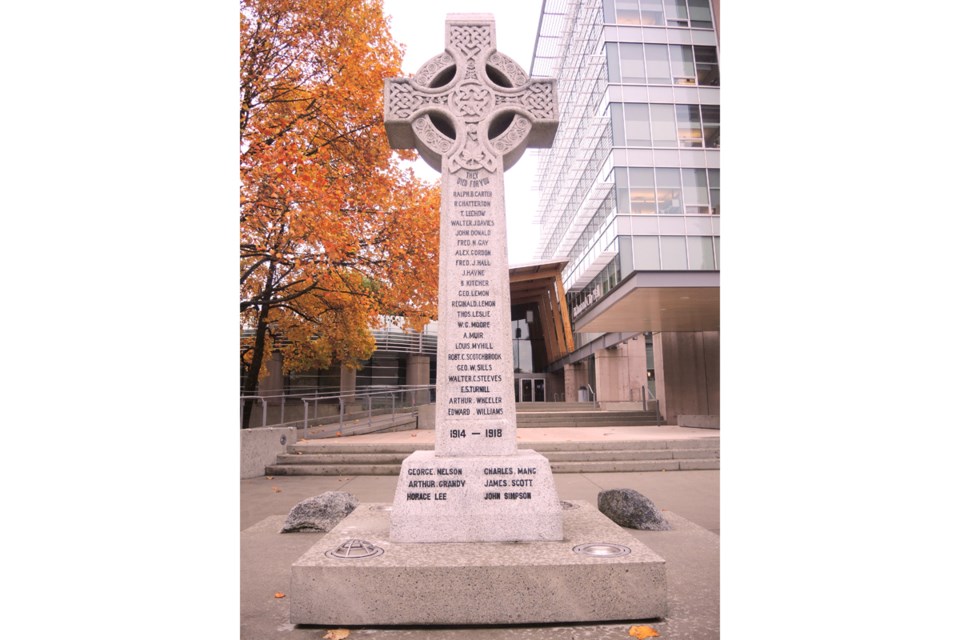Thousands of people are drawn to it like a magnet every Nov. 11 and even more walk or drive right past it every other day of the year.
But not a lot of people are aware of how the cenotaph outside Richmond city hall is prepared for its day in the sun — Remembrance Day.
The hand-carved, three-metre high monument was constructed in 1922 out of granite, due to popular feeling after the First World War ended in 1919 and is the traditional memorial for those lost in battle.
The names of Richmond soldiers killed during war are listed on the cenotaph.
Surprisingly, although a detailed assessment of the cenotaph’s condition is carried out annually, it only gets a proper clean twice a year, one of which usually taking place in the days leading up to Nov. 11.
Rebecca Forrest, the City of Richmond’s curator of collections, explained the work that goes into making sure the focal point for this Saturday’s ceremony is in prime condition.
“It gets cleaned twice a year, but we don’t want to do it too much as it may cause some deterioration,” Forrest told the Richmond News.
“We do keep an eye on it, however, and we’re not averse to doing some spot cleaning at times.
“It is made mostly of stone and it is obviously sturdy. But like anything else, it does wear eventually and the environment can impact it.”
Forrest said the city actually doesn’t use anything too technical or advanced to clean the cenotaph.
“People assume we’re out there with big bristles and such. All we use is water and soft brushes,” she said.
“On the Celtic knot, for example, (top of the cenotaph) we may do a little power-washing, but we won’t point it directly at it, as we don’t want to harm it.
“We have to be especially careful around the lettering because it is made of a very particular metal.
“The older lettering, from World War I and II, is obviously much thinner now and we have to be very careful around that.”
And although its prominent location lends itself to being more visible to passers-by, Forrest told how pollution from vehicle traffic can also have an effect on the condition of the cenotaph.
The four boulders cemented into the concrete foundation of the cross are carved with the names of four significant First World War battles — Vimy, Somme, Ypres and Amiens — and are a unique design element of the Richmond cenotaph.



